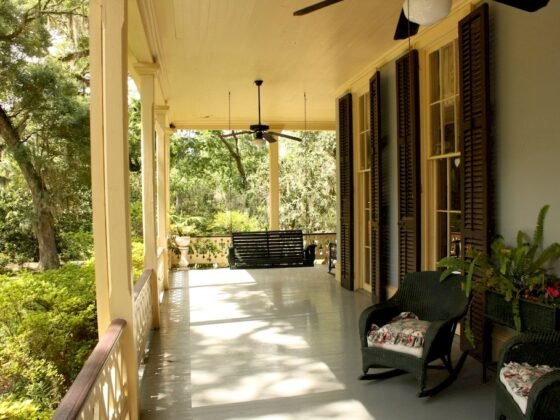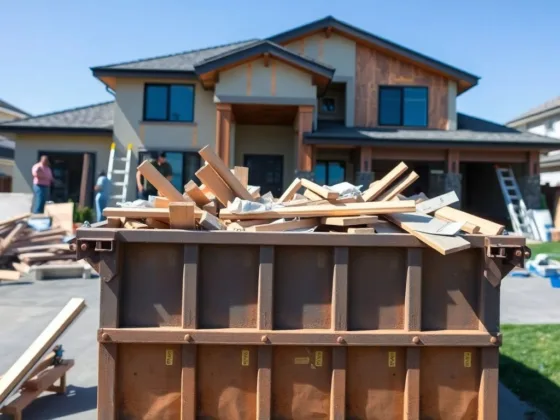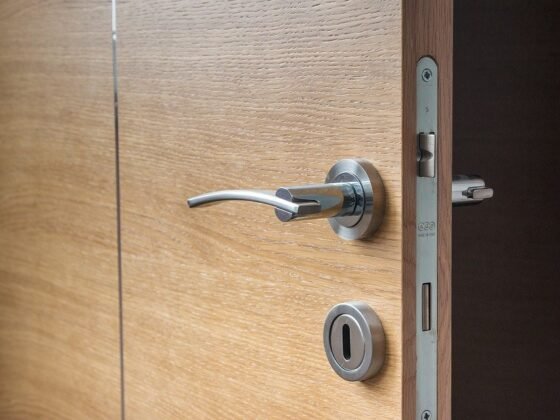Table of Contents Show
Enhancing your outdoor space with lattice under your deck can transform its visual appeal and utility. However, when faced with uneven ground, the process may seem daunting. This step-by-step guide will walk you through installing lattice, ensuring a polished look while maximizing functionality—adding privacy, storage, and charm.
What Is Lattice and Why Install It Under a Deck?
Lattice is a crisscrossed framework of wood, vinyl, or composite pieces. Typically used as fencing or decorative skirting, lattice provides a clean, finished look under decks. It hides exposed areas, acts as a barrier for animals, and creates extra storage. Moreover, lattice under a deck is a popular privacy solution, keeping your outdoor space visually cohesive.
Learn more about how lattice can enhance your deck’s aesthetics and practicality by checking out this helpful overview.
Types of Lattice for Deck Installation
When picking a lattice, consider durability, cost, and maintenance.
- Wood: Affordable but susceptible to warping and rot without sealing.
- Vinyl: Durable and low-maintenance. It’s ideal for a sleek, modern look.
- Composite: Combines the best of wood and vinyl but comes at a higher price.
Each material has unique benefits. Whether you’re seeking budget-friendly or long-term durability, there’s an option for every need.
Advantages of Installing Lattice on Uneven Ground
Uneven surfaces under a deck often detract from the visual appeal. Lattice compensates for slopes using frames and customized cuts, providing a seamless finish. Beyond aesthetics, lattice helps:
- Hide messy or empty spaces under the deck.
- Offer customizable storage options.
- Create uniformity between the deck structure and surrounding natural elements.
For tailored advice about uneven installations, browse insights on lattice installation solutions for sloped areas.
RELATED: 9 Deck Skirting Ideas to Consider for Your Home
Preparation Before Installing Lattice on Uneven Ground
Preparation is key for success. By ensuring tools, materials, and measurements are sorted upfront, you’ll save time and avoid mistakes.
Tools and Materials Checklist
| Tools | Materials |
|---|---|
| Measuring tape | Lattice panels |
| Circular saw or miter saw | Hinges (for access panels) |
| Drill and screws | Wood stops |
| Pencil or chalk for marking | |
| Straight edge |
Choosing high-quality lattice or accessories ensures both flexibility and durability across uneven ground.
Measuring and Marking the Installation Area
Avoid guessing by measuring accurately. Start by:
- Measuring the deck’s perimeter to determine panel size.
- Checking for slopes using a level tool, marking reference points with chalk or stakes.
- Take height and taper measurements every 6–8 feet to cut precisely.
Looking for detailed tips? Here’s a great reference to mark efficiently on slopes: Installing Lattice Under Deck on a Slope.
Preparing the Ground Surface
Clearing debris ensures structural integrity for the lattice. Ideally:
- Remove rocks and plants from areas where the lattice will sit.
- Compact loose soil to maintain sturdiness.
- Maintain at least a 2-inch clearance between ground and panels to prevent moisture damage or rotting.
RELATED: Enhancing Curb Appeal the Perfect Deck and Fence Combinations
Step-by-Step Guide to Installing Lattice Under a Deck
With preparations complete, it’s time to install your lattice. Follow these steps:
Measuring and Cutting the Lattice Panels
Using your measurements:
- Lay the lattice flat and mark out the cuts using a pencil.
- Employ a circular saw for clean, accurate cuts along the slope.
When using a saw, be sure to wear proper safety equipment. Cutting precisely is crucial for uneven terrain.
Building a Frame for the Lattice
Frames provide essential support for your lattice panels:
- Use treated lumber to construct the frame.
- Securely bolt the frame against the deck structure.
- For uneven ground, adjust frame height and angle it accordingly.
Attaching Lattice Panels to the Frame
Use screws or staples to attach the panels securely:
- Maintain tight edges against the frame for a professional look.
- Consider reinforcing the joints to withstand weather or pressure.
Creating Access Panels for Under-Deck Storage
For added functionality:
- Install hinges on one or two lattice panels.
- Attach handles to make opening seamless.
Creating access panels keeps storage easily reachable without compromising aesthetics.
Alternatives to Traditional Lattice for Under-Deck Areas
Sometimes, traditional lattice isn’t the best fit. Here are some alternatives.
Comparing Alternative Materials and Designs
Consider modern alternatives like:
- Horizontal slats for a minimalist aesthetic.
- Curtains for temporary coverage.
- Decorative composite panels for a unique finish.
For an in-depth comparison of these options, explore alternative design examples.
Advantages and Drawbacks of Alternatives
While these options are appealing, they also come with pros and cons. For instance:
- Slats provide a polished look but cost more than lattice.
- Curtains may lack weather resistance but are easier to install.
Maintenance and Care Tips for Lattice Under a Deck
Proper care preserves your investment.
Protecting Wooden Lattice from Weather Damage
Using sealants or paint protects wood from moisture or UV rays. Reapply annually for maximum durability against environmental stress.
Inspecting and Repairing Lattice Panels
Regularly check for wear, cracks, or loosened fittings:
- Replace damaged sections promptly.
- Tighten screws if lattice starts to loosen due to shifting ground.
RELATED: Adding Privacy to the Backyard: 10 Ideas to Try
Creative Lattice Under Deck Ideas
Lattice installation doesn’t need to be boring. Here are some inventive ideas to elevate your design:
Adding Decorative Trim and Features
Incorporate:
- Painted or stained lattice for added pizzazz.
- Custom decorative trim matching deck and home themes.
Incorporating Landscaping into Lattice Designs
Frame your lattice with landscaping to blend nature and design:
- Add planting beds filled with shrubs or flowers around the deck for a soft, inviting look.
Conclusion
Installing lattice under your deck, even on uneven ground, boosts both form and function. With careful preparation, precise measurements, and a clear plan, this project is achievable for even beginner DIYers.
Whether you go with wood, vinyl, or alternatives, a well-mounted lattice transforms your space into a polished retreat. Ready to get started? Dive into your project today!

Photo by Laker
FAQs
Lattice is a crisscrossed framework made from wood, vinyl, or composite materials. Installing it under your deck not only enhances its visual appeal by hiding exposed areas but also provides privacy, acts as a barrier for animals, and creates additional storage space. It helps maintain a cohesive look for your outdoor area.
There are three main types of lattice: wood, which is affordable but can warp or rot; vinyl, which is durable and low-maintenance for a sleek look; and composite, which combines the benefits of wood and vinyl but comes at a higher price. Choose based on your budget and desired longevity.
Start by clearing the area of debris, rocks, and plants. Compact any loose soil to ensure stability, and maintain at least a 2-inch clearance between the ground and the lattice panels to prevent moisture damage or rotting.
You’ll need tools like a measuring tape, circular saw or miter saw, drill and screws, and a pencil or chalk for marking. For materials, gather lattice panels, hinges (if you want access panels), and wood stops. Using high-quality items will enhance the durability of your installation.
To create access panels, install hinges on one or two lattice panels and attach handles for easy opening. This allows for convenient access to storage space without compromising the overall aesthetic of your deck.
Regularly inspect your lattice for wear, cracks, or loose fittings, and replace damaged sections promptly. For wooden lattice, apply sealants or paint annually to protect against moisture and UV rays. Tighten screws if the lattice loosens due to shifting ground.










